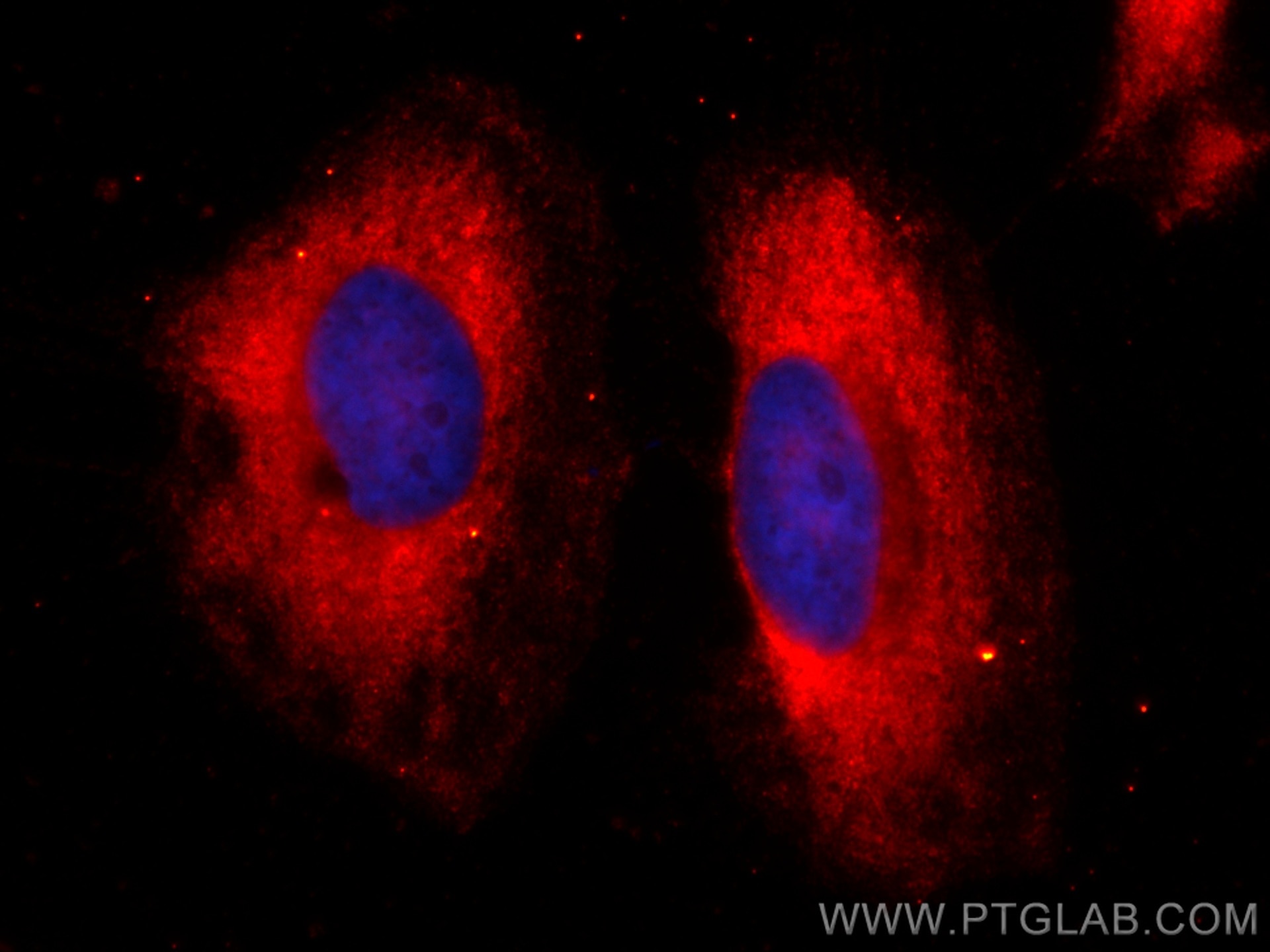CoraLite®594-conjugated BORIS Monoclonal antibody
BORIS Monoclonal Antibody for IF
Host / Isotype
Mouse / IgG1
Reactivity
human, mouse
Applications
IF
Conjugate
CoraLite®594 Fluorescent Dye
CloneNo.
2B12E2
Cat no : CL594-60079
Synonyms
Validation Data Gallery
Tested Applications
| Positive IF detected in | HeLa cells |
Recommended dilution
| Application | Dilution |
|---|---|
| Immunofluorescence (IF) | IF : 1:50-1:500 |
| Sample-dependent, check data in validation data gallery | |
Product Information
CL594-60079 targets BORIS in IF applications and shows reactivity with human, mouse samples.
| Tested Reactivity | human, mouse |
| Host / Isotype | Mouse / IgG1 |
| Class | Monoclonal |
| Type | Antibody |
| Immunogen | BORIS fusion protein Ag1003 相同性解析による交差性が予測される生物種 |
| Full Name | CCCTC-binding factor (zinc finger protein)-like |
| Calculated molecular weight | 82 kDa, 75 kDa |
| Observed molecular weight | 75 kDa |
| GenBank accession number | BC130486 |
| Gene symbol | CTCFL |
| Gene ID (NCBI) | 140690 |
| RRID | AB_2883418 |
| Conjugate | CoraLite®594 Fluorescent Dye |
| Excitation/Emission maxima wavelengths | 588 nm / 604 nm |
| Form | Liquid |
| Purification Method | Protein G purification |
| Storage Buffer | PBS with 50% Glycerol, 0.05% Proclin300, 0.5% BSA, pH 7.3. |
| Storage Conditions | Store at -20°C. Avoid exposure to light. Stable for one year after shipment. Aliquoting is unnecessary for -20oC storage. |
Background Information
CTCFL, also named BORIS (for brother of the regulator of imprinted sites) is a paralogue of the 11 zinc-finger transcription factor, CTCF. It is predominantly expressed in spermatocytes in the testis, also can be found in tumors and cancer cell lines. It mainly participates in insulator function, nuclear architecture and transcriptional control, which probably acts by recruiting epigenetic chromatin modifiers. It has a key role in gene imprinting in male germline, by participating in the establishment of differential methylation at the IGF2/H19 imprinted control region (ICR). Directly binds the unmethylated H19 ICR and recruits the PRMT7 methyltransferase, leading to methylate histone H4 'Arg-3' to form H4R3sme2.
Protocols
| Product Specific Protocols | |
|---|---|
| IF protocol for CL594 BORIS antibody CL594-60079 | Download protocol |
| Standard Protocols | |
|---|---|
| Click here to view our Standard Protocols |


